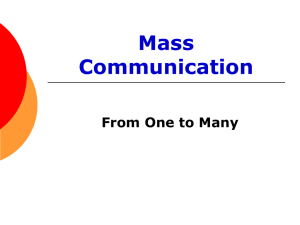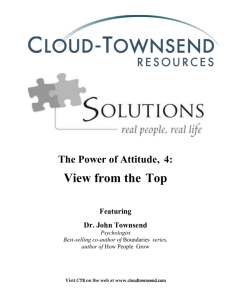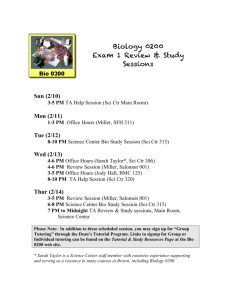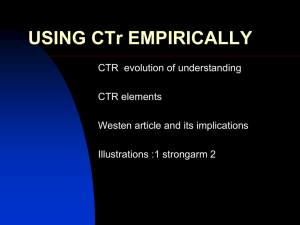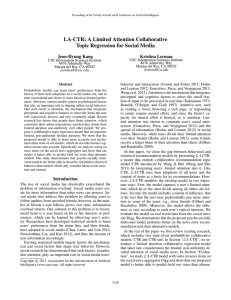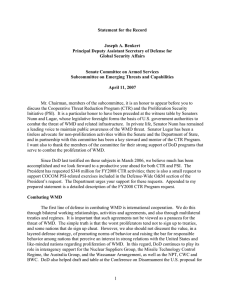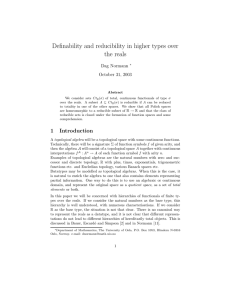Modeling and Predicting Personal Information Dissemination Behavior
advertisement
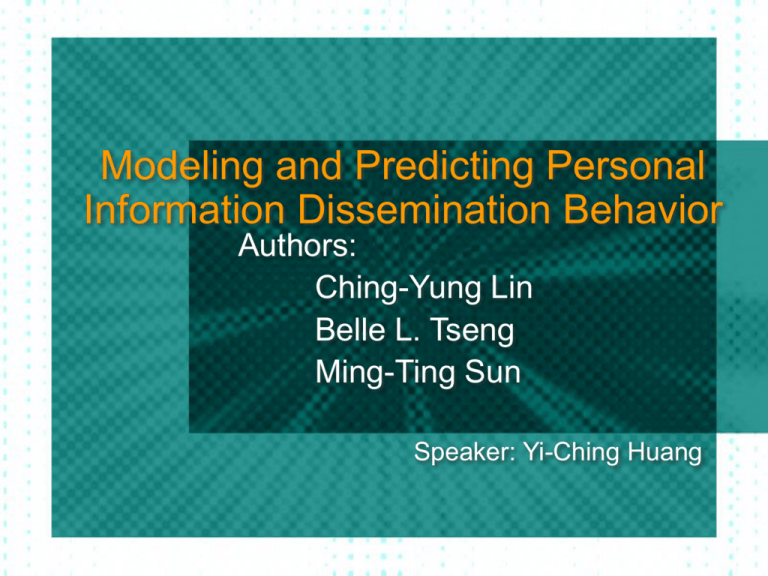
Modeling and Predicting Personal Information Dissemination Behavior Authors: Ching-Yung Lin Belle L. Tseng Ming-Ting Sun Speaker: Yi-Ching Huang Outline Introduction CommuntiyNet Community Analysis Individual Analysis CommunityNet Applications Conclusions Introduction Not what you know, but who you know A social network plays a fundamental role as a medium for the spread of information, ideas, and influence We develop user-centric modeling technology Dynamically describe and update a PSN Infer , predict and filter some questrions Overview CommunityNet Personal Social Network ERGM (p* model) Content-Time-Relation Algorithm Predictive Algorithm CTR Algorithm Joint probabilistic model Sources email content Sender and receiver information Time stamps CTR algorithm Training phase Input: old information from emails (content, sender, and receiver) Output: Steps: Estimate Estimate CTR algorithm Testing phase Input: new emails with content and time stamps Output: Steps Estimate Estimate Update the model by incorporate the new topics Inference, filtering, prediction Q1: Which is to answer a question of whom we should send the message d to during the time period t? Q2: If we receive an email, who will be possibly the sender? Predictive algorithm Use personal social network model Use LDA combined with PSN model Use CTR model Use Adaptive CTR model Aggregative update : t(0) ~ t(i-1) Recent data update : t(i-n) ~ t(i-1) sliding window: choose efficient data Community Analysis Topic analysis Topic distribution Topic trend analysis Prediction Community patterns share information int the community Individual Analysis Role Discovery Predicting Receivers Inferring Senders Adaptive Prediction Role Discovery Show how people’s roles in an event Predicting Receivers Infer who will possibly be the receivers by historic communication records the content of the email-to-send Inferring Senders Infer who will possibly be the senders by Person’s CommunityNet The email content Adaptive Prediction Apply adaptive algorihtm to solve the email change problem over time Adaptive Prediction Community Applications Sensing Informal Networks Personal Social Network Personal Topic-Community Network Personal Social Capital ManagementReceiver Recommendation Demo Personal Social Network Personal Social Network Personal Social Network Personal Topic-Community Network Personal Social Capital ManagementReceiver Recommendation Demo Personal Social Capital ManagementReceiver Recommendation Demo Conclusions CTR algorithm incorporates contact, content, and time information simultaneously CommunityNet can model and predict the community behavior as well as personal behavior Multi-modality algorithm performs better than both the social network-based and contentbased predictions




